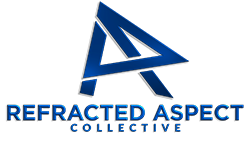
When teams lack a clear understanding of the broader business goals and how their work contributes to them, silos form naturally, fragmenting efforts and undermining overall performance.
- Strategic Alignment Is the Single Most Effective Antidote to Team Silos
- Teams Understand Broader Business Goals Only When Leadership Communicates and Reinforces Them Consistently
- The Root Cause of Misalignment Is Structural Disconnects in Decision-Making and Incentives
- What I Wish I Knew Earlier: The Hidden Costs and Overlooked Connections of Misalignment
- Practical Alignment Strategies for Lean Teams and Solo Founders
- Scaling Teams Need Clear Communication, Defined Decision Rights, and Consistent Processes
- Transitioning Ownership Requires Capturing Knowledge, Managing Relationships, and Building Independence
- Observable Indicators That Your Team’s Strategic Understanding Is Improving
- Frequently Asked Questions
- Reframing Alignment as a Strategic Discipline That Drives Sustainable Performance
- Take the Next Step Toward Strategic Clarity with Refracted Aspect
Strategic Alignment Is the Single Most Effective Antidote to Team Silos
Teams that clearly understand the company’s overarching objectives and their role in achieving them operate with unified purpose, reducing duplication and conflicting priorities.
Without this alignment, individual groups default to optimizing their own metrics, creating isolated pockets of activity disconnected from the business’s strategic direction.
Ensuring every team member sees how their work fits into the bigger picture is the foundational step to breaking down silos and driving cohesive execution.
Teams Understand Broader Business Goals Only When Leadership Communicates and Reinforces Them Consistently
Clear, repeated communication from leadership about the company’s strategic priorities is non-negotiable for team alignment.
Every team member must know not just what the goals are, but why they matter and how their daily tasks contribute to those outcomes.
This understanding cannot be assumed; it requires deliberate messaging, reinforced through meetings, documentation, and performance discussions.
When teams grasp the “why” behind their work, they make decisions that support the broader strategy rather than narrow departmental interests.
Alignment is maintained through ongoing dialogue, not one-off announcements.
With this clarity, teams coordinate efforts, share information freely, and prioritize initiatives that advance the company’s mission.
Next, we will explore the organizational dynamics that cause misalignment despite good intentions.
The Root Cause of Misalignment Is Structural Disconnects in Decision-Making and Incentives
Even capable organizations with strong leaders often face systemic barriers that fragment understanding across teams.
Decision-making bottlenecks concentrate authority in a few hands, limiting transparency and slowing information flow.
When incentives reward local optimization—such as hitting departmental targets—teams naturally focus inward rather than collaborating.
Competing priorities and resource constraints force teams to make trade-offs that may conflict with other groups’ objectives.
Cultural blind spots, where leadership assumes alignment exists without verifying it, perpetuate these divides.
These structural dynamics embed silos into daily operations, making misalignment predictable rather than accidental.
Understanding these patterns helps leaders diagnose why alignment efforts stall and where to intervene.
What I Wish I Knew Earlier: The Hidden Costs and Overlooked Connections of Misalignment
Leaders often focus on fixing communication or introducing new tools, but miss deeper cultural and systemic issues that sustain silos.
Short-term fixes like more meetings or software can increase noise without improving clarity or shared purpose.
Misalignment creates second-order effects: duplicated work, slower decision cycles, and eroded trust between teams.
Departments may appear functional in isolation but fail to deliver integrated outcomes, frustrating customers and stakeholders.
Leaders rarely see how informal networks and unwritten rules undermine formal strategies.
Recognizing these blind spots shifts the approach from surface-level fixes to addressing root causes embedded in organizational design.
This perspective reframes alignment as an ongoing system-wide discipline, not a one-time project.
Practical Alignment Strategies for Lean Teams and Solo Founders
Immediate actions include holding a focused session to articulate and document the company’s top 3-5 strategic goals clearly for everyone.
Use simple tools like shared documents or team chat channels to keep these goals visible and top of mind daily.
Clarify individual roles by linking key responsibilities directly to these goals, so each person sees their impact.
Implement a weekly check-in where team members report progress against strategic priorities, fostering accountability and transparency.
Adopt a mindset that every task should be evaluated by how it advances the broader business, not just immediate outputs.
These low-cost, quick interventions build alignment without adding complexity or requiring new hires.
Scaling Teams Need Clear Communication, Defined Decision Rights, and Consistent Processes
As headcount grows rapidly, clarity about who needs what information and when becomes critical to prevent breakdowns.
Establish communication protocols that specify the frequency, format, and audience for updates related to strategic goals.
Define decision authority explicitly to avoid bottlenecks and empower teams to act within their scope aligned to company priorities.
Standardize key processes to ensure consistent execution and reduce variability that causes friction between teams.
Invest in onboarding that emphasizes strategic context so new hires understand how their work fits into the bigger picture from day one.
These interventions stabilize momentum and reduce reactive firefighting common in fast-growing organizations.
Transitioning Ownership Requires Capturing Knowledge, Managing Relationships, and Building Independence
Document critical processes and decision rationales that currently reside only in founders’ or key leaders’ heads.
Develop relationship transition plans that maintain client and partner trust during leadership changes.
Empower teams with clear guidelines and authority to operate independently, reducing founder bottlenecks.
Balance preserving operational continuity with gradual capability development to avoid disruption.
These steps protect value and reputation while preparing the business for smooth succession or sale.
Observable Indicators That Your Team’s Strategic Understanding Is Improving
Early signals include fewer escalations due to misunderstandings and quicker alignment on priorities during meetings.
Progress markers show up as reduced rework, more proactive cross-team collaboration, and clearer communication channels.
Sustainability signs are consistent decision-making aligned with strategy, stable workflows, and a culture where teams routinely connect their work to business outcomes.
Leaders can track these through routine observations and simple metrics without complex systems.
Recognizing these indicators helps maintain focus on alignment as a continuous discipline.
Frequently Asked Questions
How do I know if my team really understands the business goals or just nods along?
Look for evidence in their daily decisions and priorities. If their work consistently supports the company’s top objectives without constant redirection, that’s a strong sign. Ask them to explain how their tasks impact broader goals in their own words. If answers are vague or disconnected, alignment isn’t solid yet.
What’s the quickest way to fix silos when we’re already overwhelmed with work?
Start with a simple, focused conversation that clarifies the top strategic priorities and how each team’s work contributes. Make this visible and refer back to it regularly. Even a 15-minute weekly check-in can create alignment without adding much overhead.
How do I keep alignment as we add new people fast?
Embed strategic context into onboarding and assign mentors who reinforce how daily work connects to company goals. Establish clear communication rhythms and decision rights early to prevent confusion and duplicated effort.
What if different teams have conflicting priorities that all seem important?
Leadership must arbitrate and clarify which priorities take precedence based on overall business impact. Transparent trade-off discussions help teams understand why some initiatives get more focus, reducing frustration and siloed behavior.
How can I maintain alignment when I’m juggling multiple roles and limited time?
Leverage simple tools like shared goal documents and brief, regular check-ins to keep everyone on the same page. Delegate communication of strategic priorities to trusted team members to extend your reach without adding complexity.
Reframing Alignment as a Strategic Discipline That Drives Sustainable Performance
When teams lack clarity on how their work supports broader business goals, silos form, causing inefficiencies, duplicated effort, and missed opportunities. The cost is slower growth, frustrated employees, and weakened competitive position.
Addressing this requires shifting from assuming alignment to actively managing it as a continuous discipline embedded in communication, decision-making, and culture.
Progress looks like teams making autonomous decisions that advance company priorities, seamless collaboration across functions, and a shared sense of purpose that sustains momentum.
This article offers a perspective shift: strategic alignment is not a one-time fix but an ongoing system-level practice essential for operational health.
It is one critical question among many that leaders must explore to unlock their organization’s full potential.
Take the Next Step Toward Strategic Clarity with Refracted Aspect
Understanding how well your team grasps the broader business goals and their contribution is just one piece of a larger operational puzzle. Refracted Aspect works closely with experienced leaders to provide structured diagnostics and strategic guidance tailored to your unique challenges and market realities. Our approach respects your deep knowledge while offering fresh perspectives that reveal hidden patterns and opportunities. If you’re ready for a practical conversation focused on gaining clarity and aligning your internal dynamics for sustained growth, consider Book a Discovery Call with us. This is a peer-level dialogue designed to help you navigate complexity with confidence and precision.
















